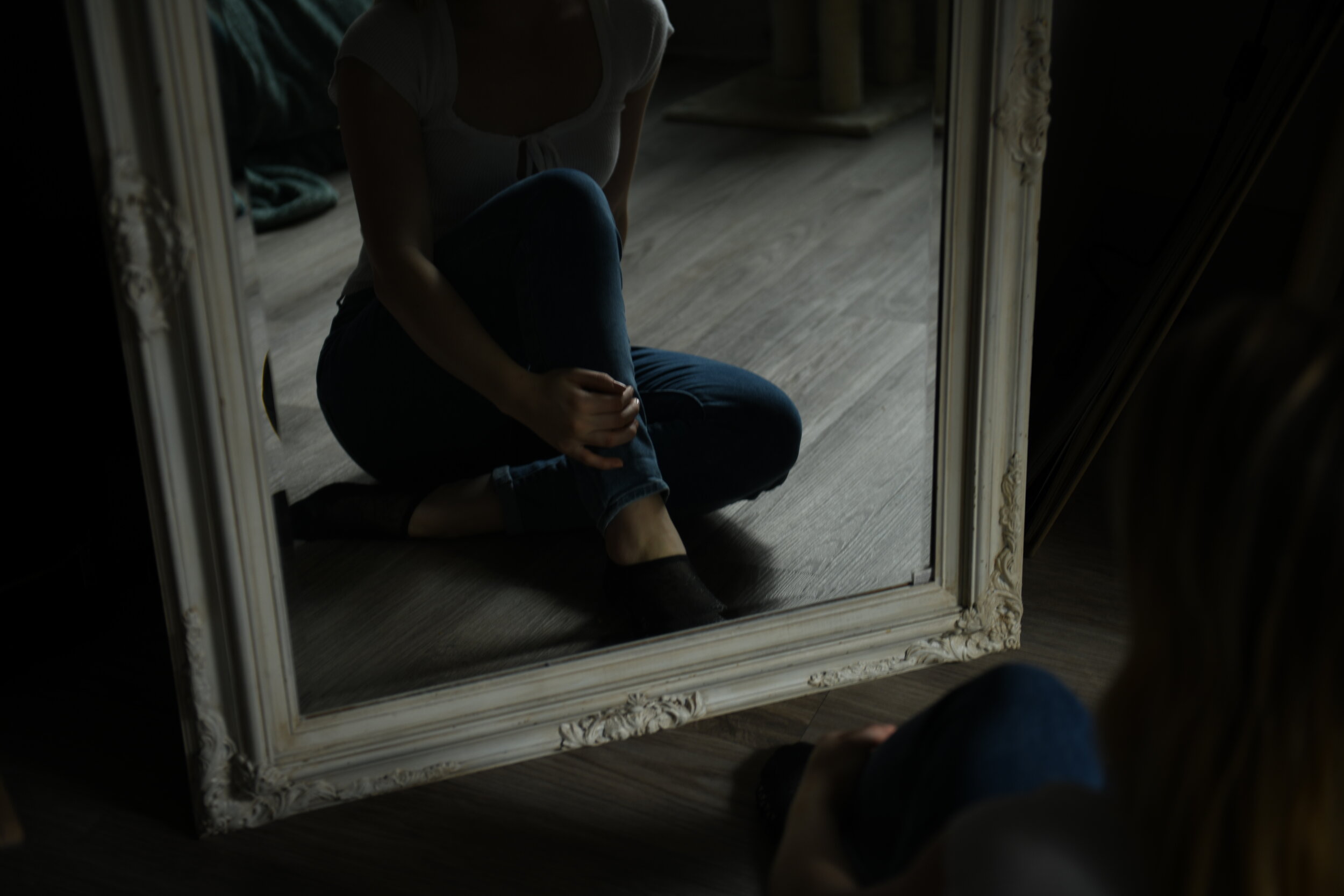
Through the Eating Disordered Lens and a Departure from Darkness
When the average fashion model is thinner than 98% of Americans, how could one size fit all? Or does the phrase itself imply that the most valuable size lies within this tiny margin? Unlike clothing companies, eating disorders don’t discriminate. (Smolak)
(Photo Illustration, Kaylie Pykkonen)
Media saturation can act as a risk factor in the development of eating disorders, which have often been classified as the deadliest psychiatric illness and affect more individuals every year as the weighted mean of global prevalence has doubled since 2006 (Galmiche). Still, the mass media fails to recognize the complexity of the disorders, focusing on extreme descriptions of the body or detailed dieting habits rather than the underlying causes. One Size: Through the Eating Disordered Lens and a Departure from Darkness aims to offer a different narrative.
Eating disorders can’t be defined by a single size or a single story. The affected individuals carry their own set of challenges and trauma. Though they also hold hope. While I cannot speak for them, I aim to amplify their grief, their strength, and resilience through conceptual photography and interviews.
These are their stories.
“It wasn’t guilt it was shame. Guilt is the feeling of I did something bad, shame is the feeling that I am bad… You fall so deep into this hole that’s so hard to get out of without people there.”
“[I thought] maybe it would mask the darkness and the chaos and the sadness and the cancer in my brain. Because I wasn't a person. And so the eating disorder was a reason behind that feeling. But it was also the reason that I had the eating disorder.”
“I'm sure she looked up anorexic and saw the pictures on Google. I know, she didn't mean to hurt me. But when you're in an eating disorder, hearing that is crushing because if they think you look healthy, they're basically telling you that you're not sick enough to need help.”



